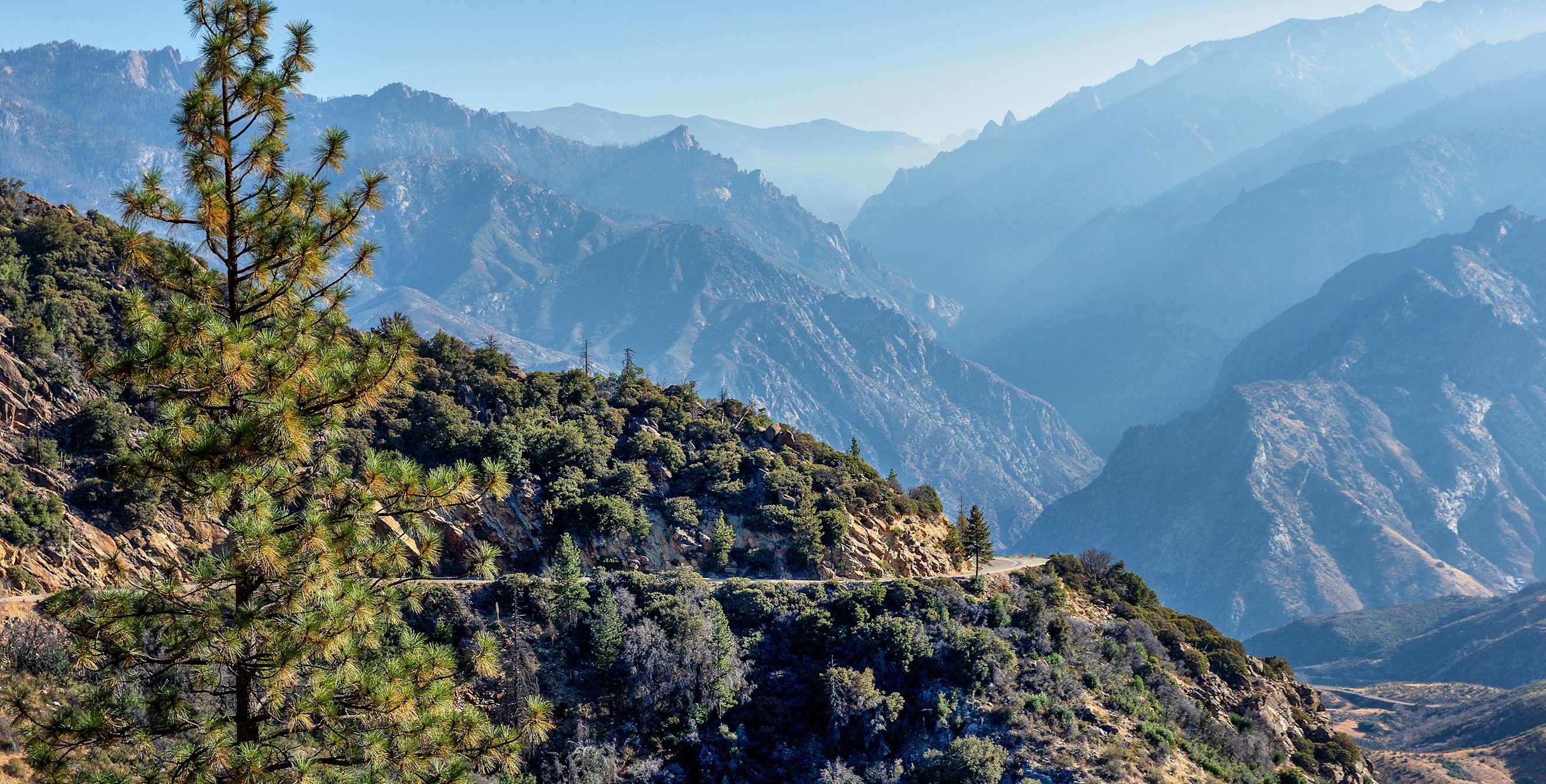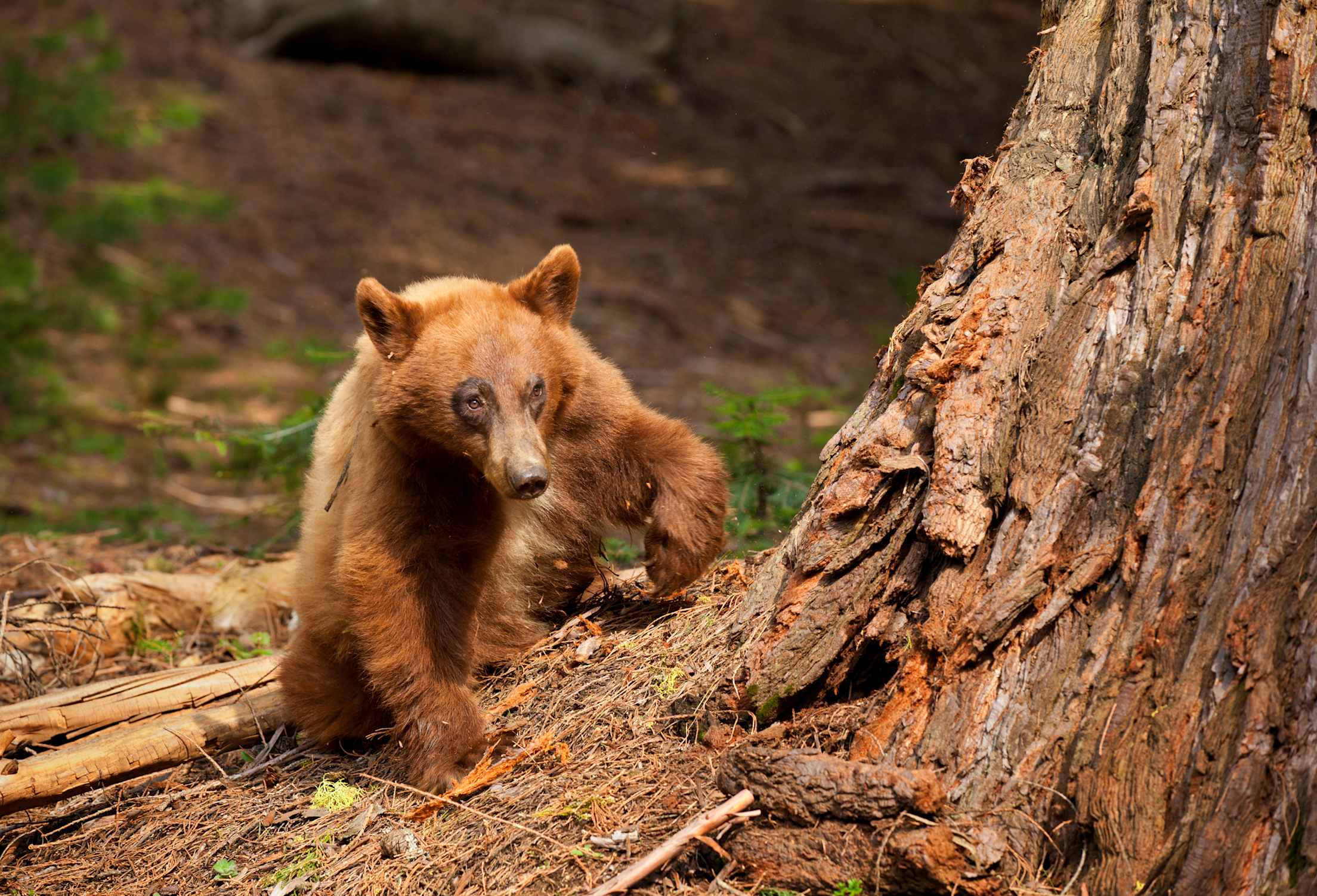
Complete Guide to Sequoia and Kings Canyon National Parks
Wander among giant sequoias and granite rock formations in the southern Sierra Nevada.

Home to some of the world’s most impressive trees, neighbors Sequoia and Kings Canyon are two distinctly different national parks that have been coupled up since 1940. Sequoia came first in 1890 as the United State’s second national park to protect the precious trees from logging, and 50 years later, the boundaries of Kings Canyon were drawn to include the glacially-carved valley.
These gems of the southern Sierra Nevada, only an hour east of Fresno and 2.5 hours from Yosemite, encompass over 1,300 square miles of mountains, foothills, canyons, caverns, and, of course, several groves of ancient giant sequoias. More than 1.5 million visitors pass through the parks every year to stand as a speck at the base of these magnificent organisms that have been around for 3,000-plus years.
No photo can fully capture their majesty—you have to see them for yourself. Be prepared to look up the whole visit!

Top Attractions in Sequoia and Kings Canyon National Parks
Spread across more than 460,000 acres, there’s plenty to discover within the boundaries of these two treasures. You can get to the parks through two entrances: the Big Stump Entrance to Kings Canyon National Park and the Ash Mountain Entrance to Sequoia National Park. A $35 single-vehicle permit is good for seven days, and an annual pass to access all National Parks Service sites is $80.
Giant Forest and General Sherman Tree
A pinnacle destination is the General Sherman tree, considered the largest living sequoia in the world based on its mass. You can’t miss it in the Giant Forest grove in Sequoia National Park, nestled between the Marble and Middle Forks of the Kaweah River.
While you’re visiting the Giant Forest, you can also drive through Tunnel Log along Crescent Meadow Road. When a giant sequoia fell due to natural causes and blocked the road in 1937, a tunnel was cut through the fallen log the following summer as a tourist attraction. The tunnel, which measures 17-feet wide by 8-feet tall, is still in use today for vehicles that can fit.
Moro Rock
Trees aren’t the only looming feature of the parks. Thousands of feet above the highway, Moro Rock is one of the granite domes you can ascend along a concrete and stone stairway with more than 350 steps, offering views of the Great Western Divide’s peaks and San Joaquin Valley’s foothills. Handrails line the path, but it’s still smart to be cautious of the steep drop offs.
Visitor’s Centers
Either as you enter or on your way out, it’s always worth stopping at one of the visitor's centers. Between the two parks, you have four to choose from: the Kings Canyon and Cedar Grove visitor’s centers in Kings Canyon, and the Foothills and Lodgepole visitor’s centers in Sequoia. Grab a postcard, get your park passport stamped, and chat with a ranger.

Where to Go and What to Do
Flora and Fauna Viewing
While you’re in the land of giants, you might as well see as many as you can. There are more than 40 giant sequoia groves within the parks, some more accessible than others. Five of the most reachable are the Giant Forest, Grant Grove, Muir Grove, Big Stump Grove, and Converse Basin Grove. Each grove has either paved or level gravel paths you can wander. You’ll find other conifer tree varieties mixed in with the sequoias.
Hiking
Wanting to log more steps and see even more? Head to any of the hiking trails that wind through the parks. A few favorites include the 2.7-mile round-trip Congress Trail that begins near the General Sherman Tree in the Giant Forest, and the 2-mile round-trip Big Stump Loop that passes through a beautiful meadow. More options can be found in the foothills, lush and wild Cedar Grove, and around the lakes in Mineral King Valley.
Scenic Drives
National parks are known for their scenic roads, and Sequoia and Kings Canyon are no exception. When the road isn’t closed for winter weather, the General Highway connects the two parks and takes you to numerous trailheads. The Kings Canyon Scenic Byway, Panoramic Point Road, and Majestic Mountain Loop also offer stunning views.

When to Go
Peak season at Sequoia and Kings Canyon is during the summer when temperatures are most stable, with highs consistently in the 70s. The trees provide shade and the mountains stay cool. Parking lots fill up by mid-morning during this time of year, so plan to arrive early. Or you can use the free shuttle service in Sequoia National Park, which runs daily in summer from 8:30 a.m. to 6 p.m. and during select fall and winter holidays. The shuttle route takes you to several stops between the Wuksachi Lodge and the Giant Forest Museum (also worth checking out).
Starting in September, facilities and ranger programs reduce their hours for the fall and winter seasons, and Generals Highway between the parks may close for inclement weather. Always check road conditions updates for closures, no matter the season, but especially when precipitation is possible. But don’t let snow stop you from visiting during the cooler months: Snowshoeing, skiing, and sledding are all accessible in the parks for winter fun.
When there isn’t snow on the ground, look out for ticks, poison oak, and rattlesnakes anytime you’re below 5,000 feet in elevation. You’re also in black bear country, and the National Park Service has advice on observing them safely and what to do in the event of an encounter.

Where to Camp and Stay
The parks have 14 campgrounds, including two open year round. For $32 a night, each campsite allows up to six people and comes with a picnic table, fire ring with grill, and metal food-storage box. Reservations are highly recommended when required (usually not in winter), and you can book a site up to four months in advance at some campgrounds.
You can also find campgrounds and hotels in surrounding Tulare County. For accommodations closest to the park, look south on Sierra Drive or west on Highway 180, with more options as you approach Fresno.
Remember, Tread Lightly
If you’re traveling with fur buddies, take note that pets aren’t allowed in most places in the parks, except picnic areas, parking lots, paved roads, and campgrounds. And because this area has been affected by wildfire, fire restrictions often apply in campgrounds, which you can check here.
Practice these Leave No Trace principles to protect the sensitive environment: plan ahead and prepare, travel and camp on durable surfaces, pack out what you pack in, dispose of waste properly, leave what you find, respect wildlife, and be considerate of others.